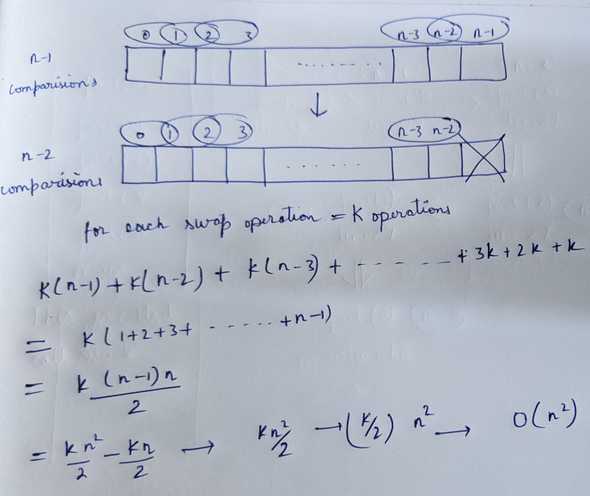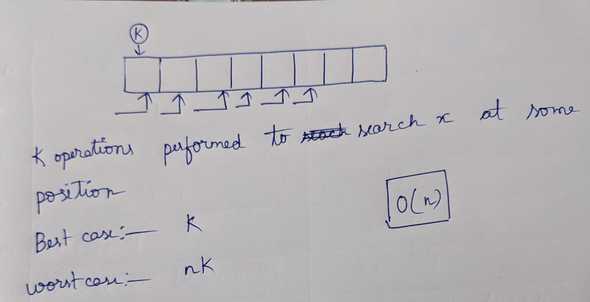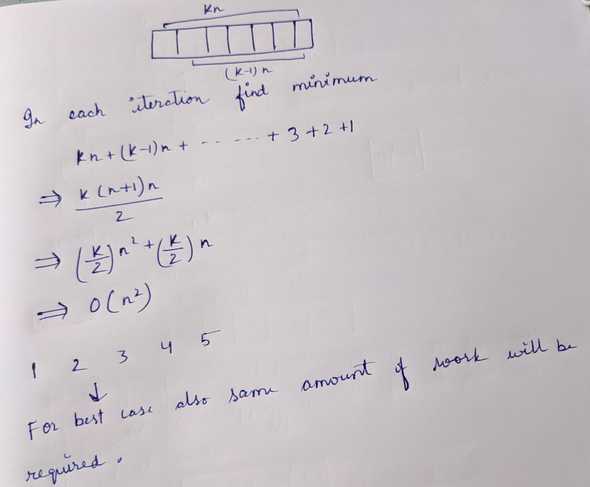« Theoretical analysis for time taken by algorithm
Theoretical analysis.
BIG O notation
Lets suppose
Algorithm 1: 10n2 +5n + 8
Algorithm 2: 5n2 + 2n + 1000
for n -> 10n2 and 5(n2) will dominate
We can't actually say Algorithm 2 will take 5(n2) time complexity. Ss this is going to change based on system. We can never actually say time. We can just convey how many instructions(addition and subtraction and if blocks and comparisons) it will take.
105 operations will remain same for all the systems, only thing will change is how much time its going to take on different systems.
5(n2) here n2 will change, 5 is just a constant so we will ignore 5 also.
Note:
- We will talk only about number of operations and not time.
- We will focus on highest power term.
- We won't care about the coefficient much.
algorithm A -> O(f(n))
Algorithm A is called Big O of f(n) if time taken by algorithm A for input n <= k * f(n)
For example :
Algorithm 2 takes f(n) = 5n2 + 10n + 1000 <= 6n2
so Algorithm 2 is O(n2)
Time complexity for finding largest element in array
max=a[0]
if(max<a[i]){
1max = a[i]
}
Time taken = (k operations) n times
Time taken <= (k+1)*n
Time complexity = O(n)
Time complexity for Bubble sort an array
Each time we perform k steps for n-1 comparisons
then k steps for n-2 comparisons
then k steps for n-3 comparisons
bubble sort => (n-1)k + (n-2)k + (n-3)k + (n-4)k + (n-5)k + ...... + k
bubble sort => (k)(n-1)(n)/2 => k(n2/2) - k(n/2) => (k/2)(n2) => c(n2)
time taken bubble sort => c(n2)
so bubble sort is O(n2)
All these are called theoretical analysis.
Linear search Time complexity
Insertion sort time complexity
Best case: O(n)
Worst case: O(n2)
Selection sort time complexity
Best case: O(n2)
Worst case: O(n2)


